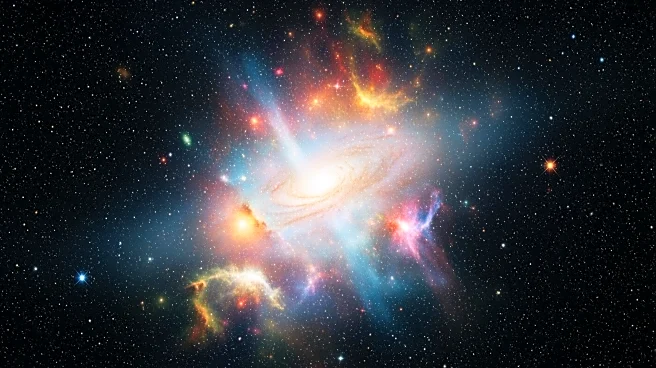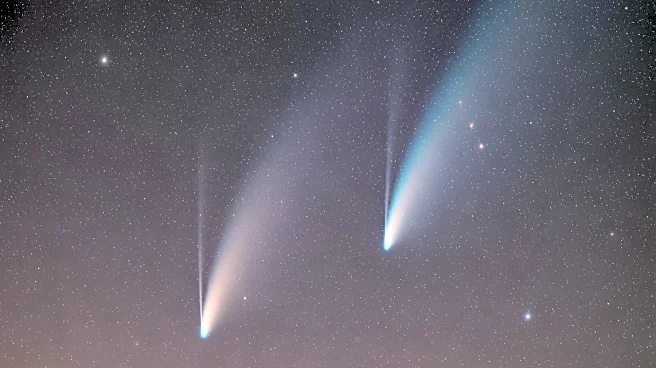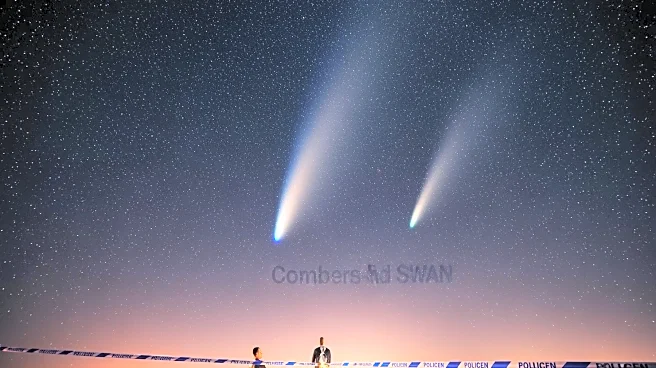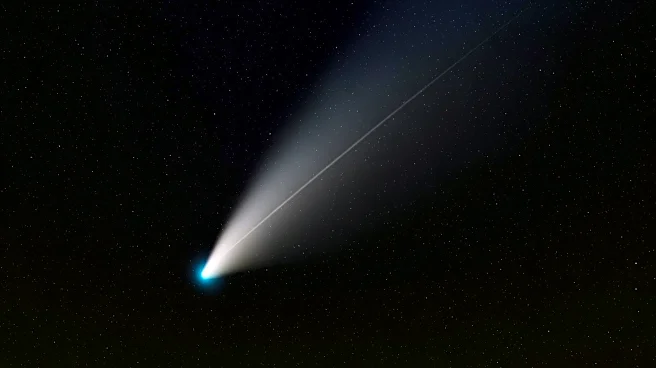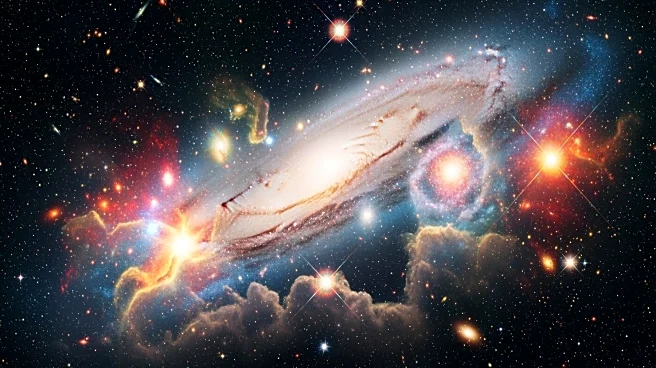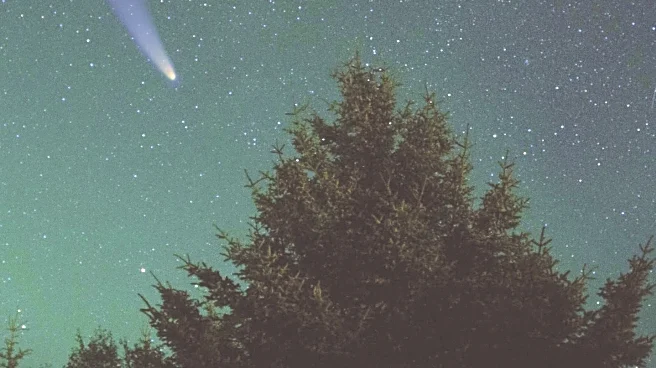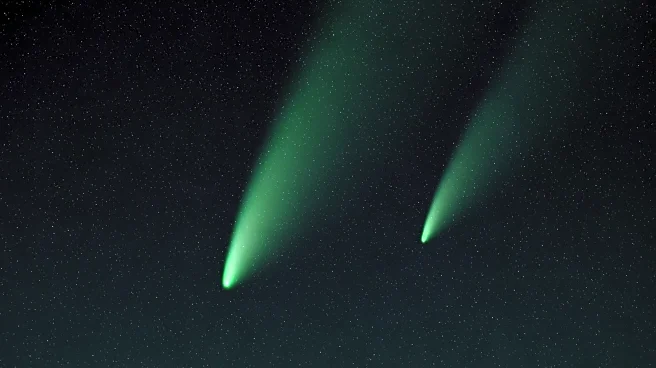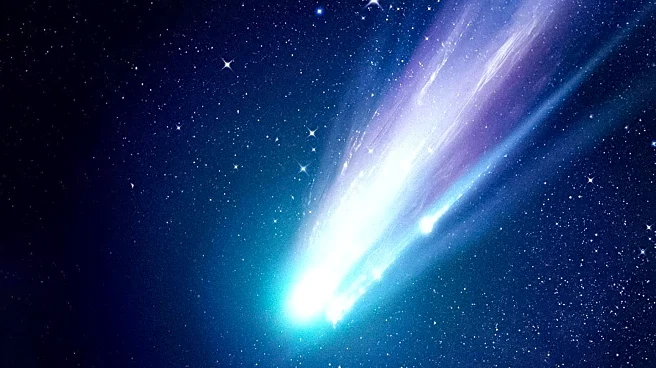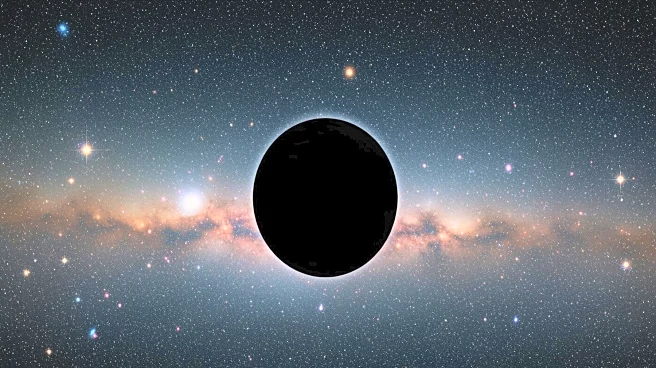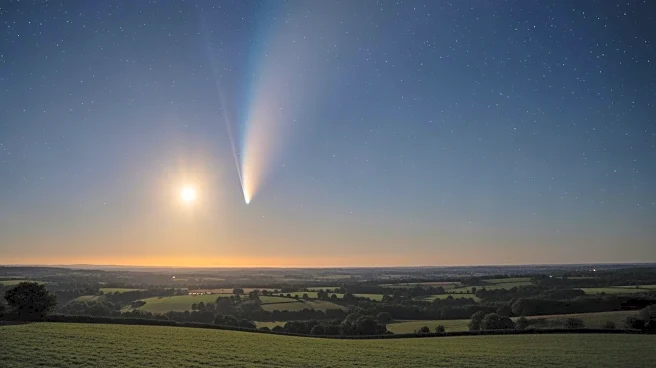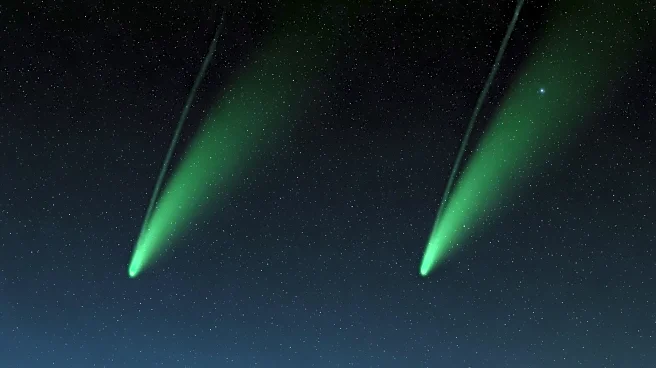What's Happening?
The Fireworks Galaxy, also known as NGC 6946, is currently well-positioned for observation in the Northern Hemisphere. Discovered by Sir William Herschel in 1798, this spiral galaxy is renowned for its
high frequency of supernova events, earning its nickname. Despite its integrated magnitude of 9.6, the galaxy's low surface brightness requires telescopes with apertures of at least 8 inches for detailed observation. The galaxy is located near the Galactic plane, making it a challenging but rewarding target for amateur astronomers. Observers can expect to see its bright core and multiple spiral arms with larger telescopes.
Why It's Important?
The Fireworks Galaxy's frequent supernova activity makes it a valuable object of study for astronomers interested in stellar evolution and cosmic events. Observing such phenomena can provide insights into the life cycles of stars and the dynamics of galaxies. For amateur astronomers, the opportunity to witness a supernova or observe the galaxy's intricate structure is a rare and exciting experience. This celestial event highlights the importance of public engagement in astronomy and the role of amateur astronomers in contributing to scientific discoveries.
What's Next?
As the Fireworks Galaxy remains visible, astronomers and enthusiasts are encouraged to take advantage of clear skies to observe this unique galaxy. Future observations may focus on capturing supernova events or studying the galaxy's structure in greater detail. The continued interest in NGC 6946 could lead to collaborative efforts between amateur and professional astronomers, enhancing the understanding of this dynamic galaxy.
